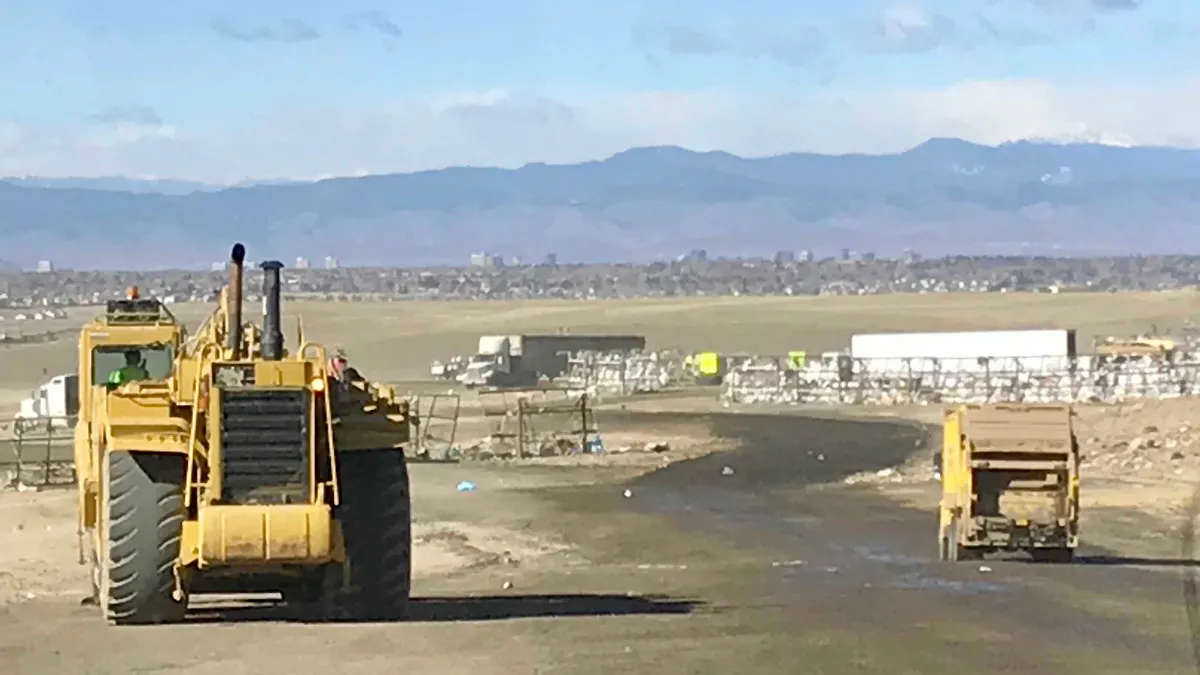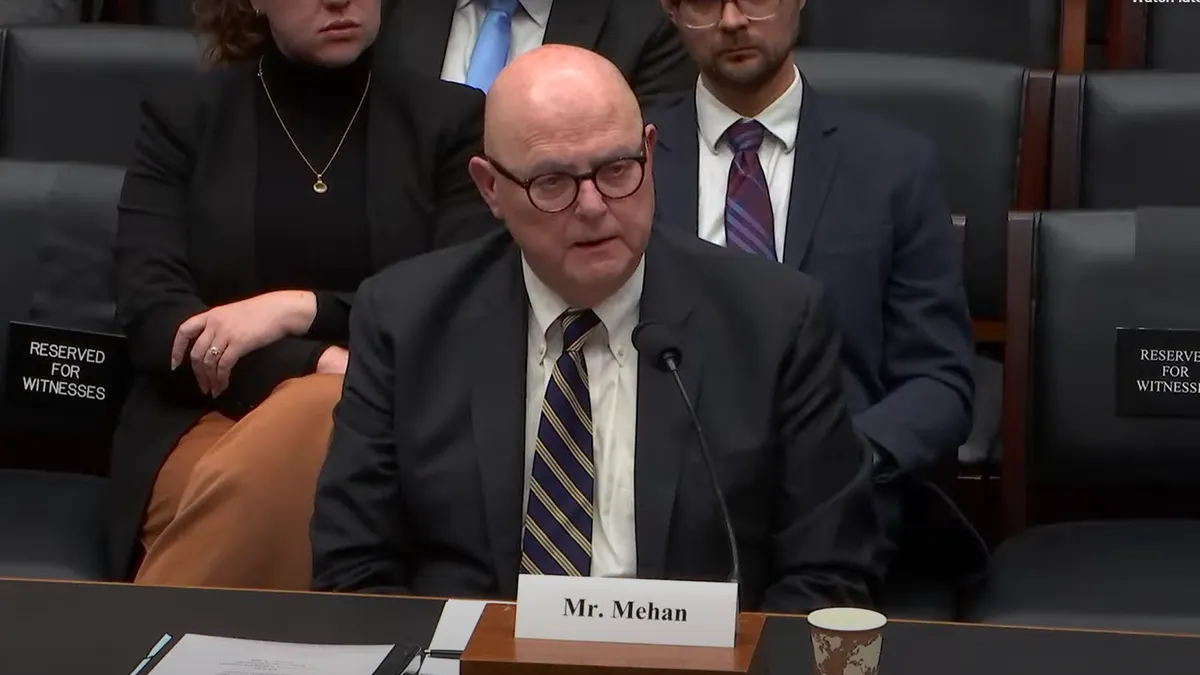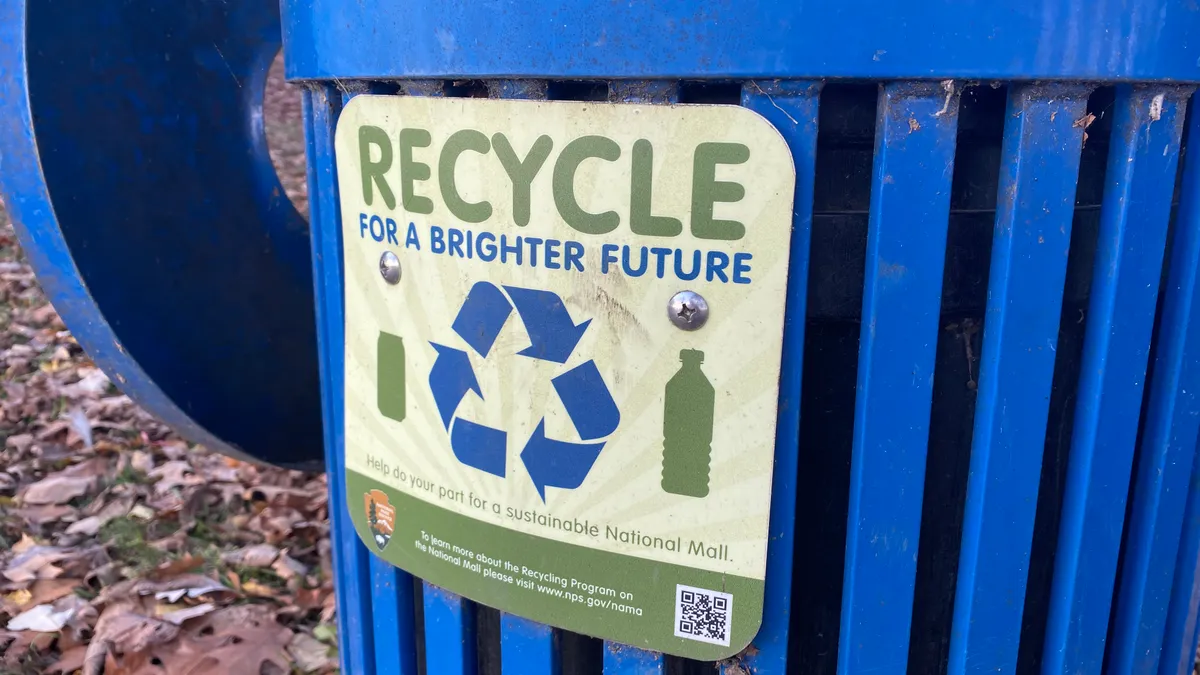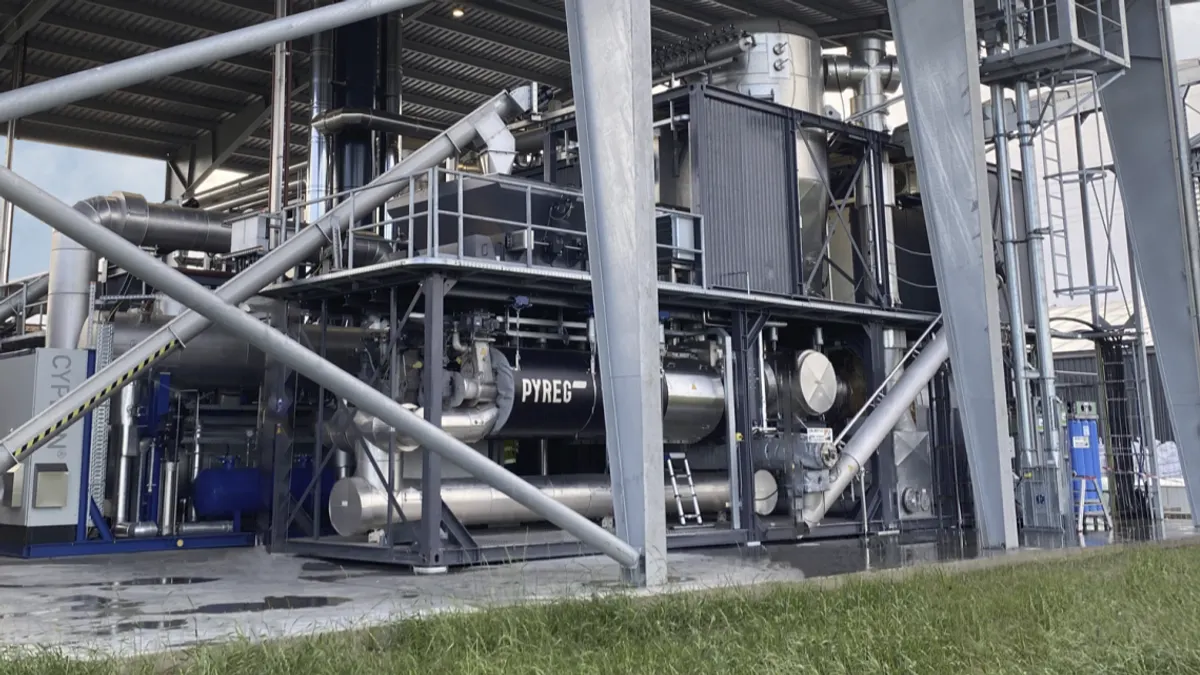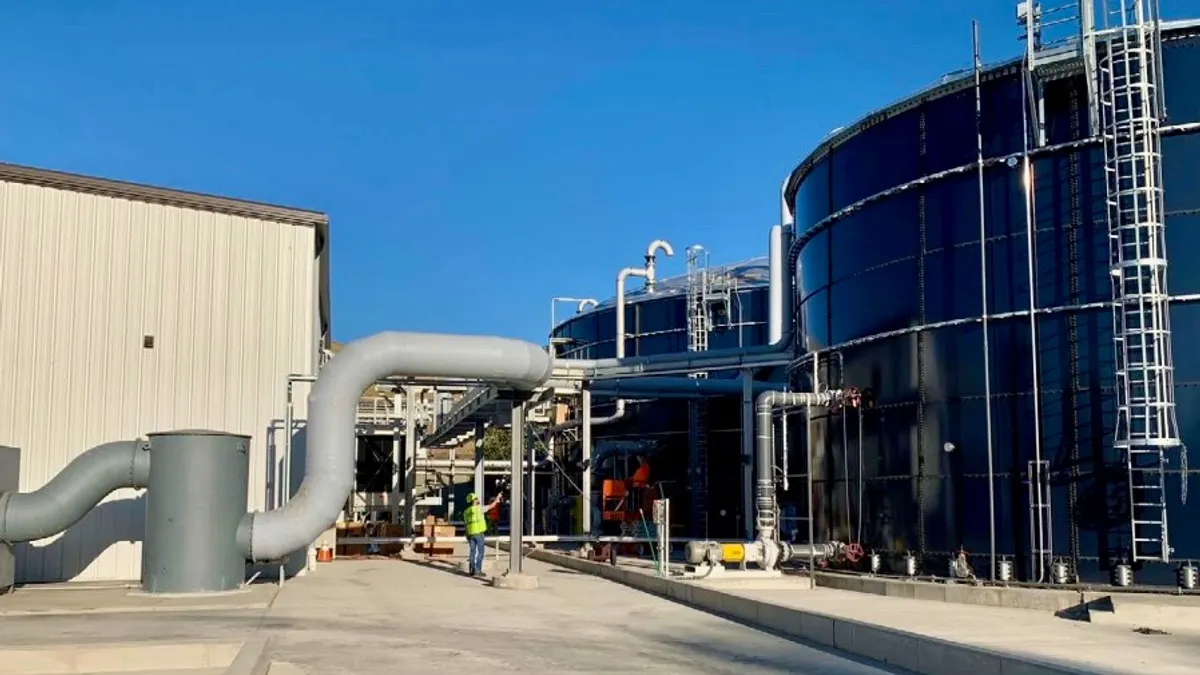When disaster strikes, local governments have to respond. In addition to keeping the lights on and the hospitals open, cities have to employ solid waste workers for another critical task: Clearing the roads and removing debris.
Handling debris management and cleaning roads presents at least two big problems for local governments. Problem one is that solid waste collection can come to a standstill as disaster debris is prioritized over regular household and commercial collection.
The second problem is that disaster debris, if not sorted and processed, can take up a substantial amount of volume in a landfill, shortening that landfill's lifespan.
In Houston, for example, municipal recycling was put on hold as crews focused on debris removal. In California, wildfire cleanup has put landfill capacity at risk. Snow and ice on the East Coast has delayed trash collection in major cities.
Waste Dive spoke with Lori Scozzafava, a senior vice president at Gershman, Brickner & Bratton (GBB) to dissect the opportunities, obstacles and pitfalls in planning for debris management after a natural disaster. Scozzafava has worked in solid waste for decades, with time in leadership at the U.S. Composting Council and the Solid Waste Association of North America before joining GBB.
This interview has been edited for clarity and brevity.
WASTE DIVE: When a community or local government is making an emergency plan to handle debris, what are the most common mistakes? Or is not having a plan the biggest mistake?
LORI SCOZZAFAVA: Certainly not having a plan puts you at a disadvantage. In terms of some of the huge pitfalls, I think that we have seen, is when an event occurs, FEMA [the Federal Emergency Management Agency] is very much available in terms of the disaster, to be reimbursing communities for the costs that they incur. But only if [communities] follow some very strict guidelines.
The benefits of having a plan is that you learn what those guidelines are, you set things up ahead of time, and then you can get reimbursed for it. That's a really important component to the planning process. If you don't do that planning, it makes it very difficult to in a very short period of time to set things up in the way that you need to in order to create the documentation.
Within having a plan, what kind of pitfalls might there be?
SCOZZAFAVA: One of the things that we are looking at from a debris management standpoint, is: Do you have contracts set up ahead of time. Do you have the contracts in place to have haulers to collect material? Do you have temporary sites already established to store debris?Then you don't have to necessarily process it all at once. You have staging areas.
What kind of variables might change what goes or doesn't go into a plan?
SCOZZAFAVA: The level of complexity is, in all likelihood, if you're a town, you need to find out what the county has already planned. If you're a county, you need to find out what the state has already planned. The key is everybody builds off of one another and works together in an emergency. The complexity of a small town's plan is not nearly what the complexity of the state's needs to look like.
If you don't plan ahead, and you don't separate materials for recovery, essentially, it all goes into your landfill. Communities can eat up years of their landfill life with one incident.

Lori Scozzafava
Senior Vice President, GBB
There are absolutely different levels of complexity depending on what kind of disaster it is. If it's a hurricane-type situation, you're more likely to generate woody waste, like trees and bushes. On a flood, you're basically dealing with the contents of peoples' homes. Brush limbs and trees can be stored and processed for mulch whereas there needs to be a way to manage the materials out of homes more directly.
What's at stake for communities that fail to plan for dealing with emergency situations and the debris that come with them?
SCOZZAFAVA: If you don't plan ahead, and you don't separate materials for recovery, essentially, it all goes into your landfill. Communities can eat up years of their landfill life with one incident.
There may be loss of potential revenue. But I think the greater loss is the use of that landfill space. If airspace is gone in a flash, that's more detrimental at that point [than losing value].
Is there one absolute key component to these types of plans?
SCOZZAFAVA: I think the contracting ahead. The one other contract that we didn't talk about, is that in order to be reimbursed by FEMA, there needs to be monitoring for the materials that are collected. Contracting with a firm that actually does that monitoring, and is familiar with that documentation, could also be a very key contract to do ahead of time.
The communication piece is really important to do ahead of time. One of the things that Houston did, or already had prepared before the hurricane hit there, they had some really nice graphics that showed their residents not only the five different types of waste streams to separate their materials into, but where to place it in front of their home. They got tremendous cooperation. Because they were already prepared with proper communications, they were able to clearly articulate what types of materials into different piles to more easily achieve that separation.





